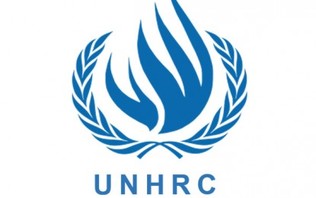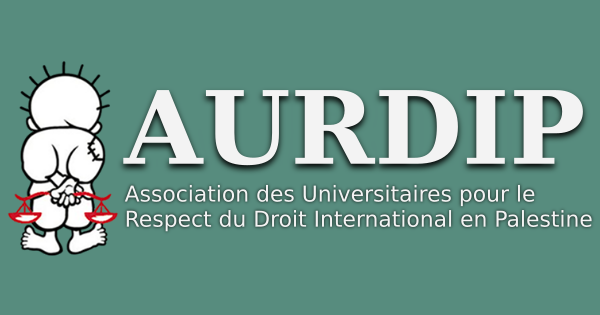The UN Independent Commission of Inquiry on the 2018 Gaza protests

GENEVA (28 February 2019): The United Nations Independent Commission of Inquiry on the protests in the Occupied Palestinian Territory today presented its findings. The report focuses on the demonstrations in the Gaza Strip, referred to as the “Great March of Return and the Breaking of the Siege”.
“The Commission has reasonable grounds to believe that during the Great March of Return, Israeli soldiers committed violations of international human rights and humanitarian law. Some of those violations may constitute war crimes or crimes against humanity, and must be immediately investigated by Israel,” said the Chair of the Commission, Santiago Canton of Argentina.
The Commission was mandated by the Human Rights Council in May 2018 to investigate all alleged violations and abuses of international humanitarian law and international human rights law in the Occupied Palestinian Territory, in the context of the large-scale protests that began in Gaza on 30 March 2018. The Commission comprises Santiago Canton of Argentina (Chair), Sara Hossain of Bangladesh and Betty Murungi of Kenya.
More than 6,000 unarmed demonstrators were shot by military snipers, week after week at the protest sites by the separation fence.
The Commission investigated every killing at the designated demonstration sites by the Gaza separation fence on official protest days. The investigation covered the period from the start of the protests until 31 December 2018. 189 Palestinians were killed during the demonstrations inside this period. The Commission found that Israeli Security Forces killed 183 of these protesters with live ammunition. Thirty-five of these fatalities were children, while three were clearly marked paramedics, and two were clearly marked journalists.
According to the Commission’s data analysis, the Israeli Security Forces injured 6,106 Palestinians with live ammunition at the protest sites during this period. Another 3,098 Palestinians were injured by bullet fragmentation, rubber-coated metal bullets or by hits from tear gas canisters. Four Israeli soldiers were injured at the demonstrations. Four Israeli soldiers were injured at the demonstrations. One Israeli soldier was killed on a protest day but outside the protest sites.
“There can be no justification for killing and injuring journalists, medics, and persons who pose no imminent threat of death or serious injury to those around them. Particularly alarming is the targeting of children and persons with disabilities,” said Sara Hossain. “Many young persons’ lives have been altered forever. 122 people have had a limb amputated since 30 March last year. Twenty of these amputees are children.”
The Commission found reasonable grounds to believe that Israeli snipers shot at journalists, health workers, children and persons with disabilities, knowing they were clearly recognizable as such.
Unless undertaken lawfully in self-defence, intentionally shooting a civilian not directly participating in hostilities is a war crime. The Commission found reasonable grounds to believe that individual members of the Israeli Security Forces, in the course of their response to the demonstrations, killed and injured civilians who were neither directly participating in hostilities, nor posing an imminent threat. These serious human rights and humanitarian law violations may constitute war crimes or crimes against humanity.
The Commission took note of the Israeli claim that the protests by the separation fence masked “terror activities” by Palestinian armed groups. The Commission found however that the demonstrations were civilian in nature, with clearly stated political aims. Despite some acts of significant violence, the Commission found that the demonstrations did not constitute combat or military campaigns.
The applicable legal framework was thus based in international human rights law. This assessment did not change even though the commission’s investigation revealed that some demonstrators were members of organized armed groups. Others were members of political parties. International human rights law prohibits the use of force based solely on a person’s actual or alleged affiliation to any group, rather than their conduct.
The Commission found that some members of the Higher National Committee organising the protests, which includes Hamas representatives, encouraged or defended demonstrators’ use of indiscriminate incendiary kites and balloons, causing fear among civilians and significant damage to property in southern Israel. The Commission concluded that Hamas, as the de facto authority in Gaza, failed to prevent these acts.
The Commission conducted 325 interviews with victims, witnesses and sources, and gathered more than 8,000 documents. An integral part of the investigation was comprehensive analysis of social media, and of vast amounts of audio-visual material showing incidents, including drone footage.
The Commission was mandated by the UN Human Rights Council to focus on accountability and identify those responsible for violations and alleged international crimes.
“The Commission will place the relevant information in a confidential file to be handed over to the High Commissioner of Human Rights, to provide access to this information to national and international justice mechanisms. The International Criminal Court is already concerned with this situation,” said Betty Murungi.
As the one-year anniversary of the Great March of Return on 30 March draws closer, the Commissioners urged all concerned to exercise restraint.
The large-scale killing and maiming of 30 March last year, when 18 people were killed and over 700 people shot, and of 14 May, when 60 people were killed and over 1100 people shot, must not be repeated. “The shooting must stop,” said Sara Hossain.
“The onus is now on Israel to investigate every protest-related killing and injury, promptly, impartially and independently in accordance with international standards, to determine whether war crimes or crimes against humanity were committed, with a view to holding accountable those found responsible”, said Santiago Canton. “We also urge the organisers, the demonstrators, and the de facto authorities in Gaza, to ensure that the Great March of Return is entirely peaceful, as it is intended to be.”
“The Commission finds that these protests were a call for help from a population in despair”, Santiago Canton reminded. “Not only Israel but also the de facto authorities led by Hamas and the Palestinian Authority have responsibilities towards them. The Commission calls on Israel to lift the blockade of Gaza, and on all three duty bearers to comply with their responsibilities and improve the living situation in Gaza.”
The Israeli authorities did not respond to repeated requests by the Commission for information and access to Israel and to the Occupied Palestinian Territory.
A fuller report, containing detailed factual and contextual information and legal analysis will be published and presented to the Human Rights Council on 18 March 2019 in Geneva.
-ENDS
To access the Commission’s short report and for more information, visit the report’s webpage.
B-roll for broadcasters can be downloaded here:
Video 1 (Incident Compilation at Gaza separation fence during protests)
Video 2 (Ahmad Abu Artema: the Reasons; The Voice from the Other Side of the Fence) [shotlist & storyline]
Video 3 (Minors injured) [shotlist & storyline]
More videos are also available on: www.youtube.com/c/UNHumanRightsCouncil
